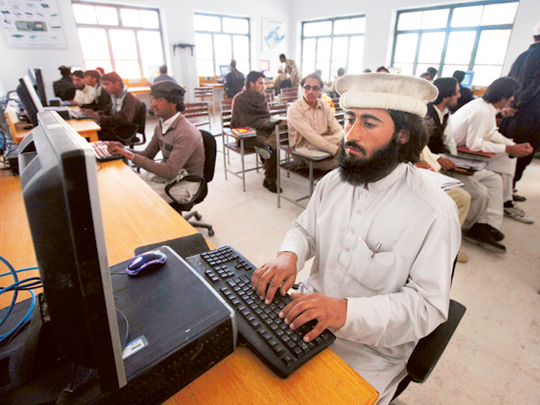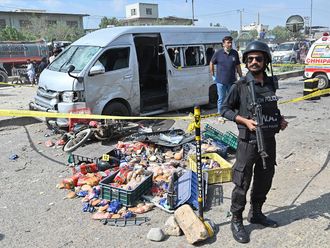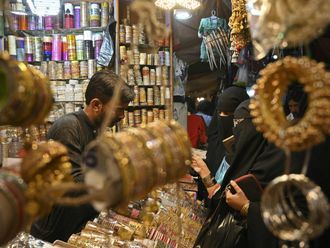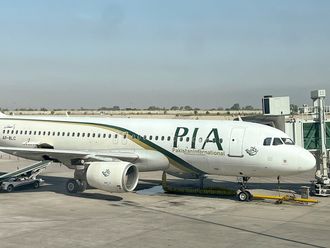
Chagmalai:
In a Pakistan army base high in the mountains on the Afghan frontier, a general explains a strategy for fighting the Taliban he calls simply “WHAM”.
The name has a distinctly bellicose ring. But the soldiers are learning to fight a new kind of war in a region US President Barack Obama has called the most dangerous on Earth.
“WHAM — winning hearts and minds,” explains the straight-talking General Nazir Butt, in charge of converting the army’s gains on the battlefield into durable security. “The plan is to turn militant sanctuaries into safe havens for the people.”
The term WHAM has been used before, but the focus this time is South Waziristan, an enclave on the Afghan border once the epicentre of a spreading Pakistan Taliban insurgency that shocked the country with its challenge to the authority of the nuclear-armed state.
According to the army narrative, the campaign includes winning over the region’s ethnic Pashtun tribes through dialogue, creating commercial opportunities and providing education in new schools and colleges.
During a three-day trip with the army, Reuters got a rare glimpse not just into the scale of the army’s state-building project in South Waziristan, but also the challenges that lurk in the inhospitable territory.
However well-meaning the new approach, there are problems that won’t go away — threats of retaliation by Al Qaida-linked militants, a lack of effective civilian administration and endemic corruption.
And the campaign to win hearts and minds has an ignoble track record in other conflict zones which serve as a reality check for even the most optimistic Pakistani officials.
In Iraq and Afghanistan, Western nations poured in millions of dollars to rebuild militant strongholds and win affection. Results have been limited: many residents view the armies as occupiers and militants remain a danger.
The goal won’t be any easier in South Waziristan. The area forms one-fifth of Pakistan’s Federally Administered Tribal Areas which are roughly the size of Belgium and governed under a system inherited from British colonialists.
Government-appointed political agents rule through the Pashtun tribes and collect and distribute revenue with little oversight. The people have limited rights.
While the Pakistani army backed the Taliban in Afghanistan in the 1990s, and supported militants fighting Indian rule in the disputed Kashmir region, in South Waziristan it found itself under attack.
Decades of resentment felt by the population and the US bombing campaign on the Afghan border following the September 11, 2001, attacks on the United States spawned a generation of Pakistani militants who used South Waziristan to launch assaults against the Pakistani state and US-led forces in Afghanistan.
Unsure how to respond, Pakistan see-sawed between brief military campaigns and appeasing the militants with short-lived peace deals. Then, in 2009, Pakistan’s army chief ordered the biggest offensive yet, pouring 40,000 troops into South Waziristan in a bid to tip the balance.
The 2009 offensive displaced almost half a million people as homes, schools and hospitals were turned into hideouts by militants and meagre civic amenities were destroyed.
Today, a combination of the offensive and US drones has helped drive the Pakistan Taliban leadership out of South Waziristan and the army is looking for ways to convince people it is safe for them to return.
But after having spent close to three years in camps, only 41,000 refugees have come back.
“The people can only feel fully secure if there is social and economic uplift,” said a brigadier who commands a cliff-side compound near Wana, the main town in South Waziristan. “It took some time but we know now that 1,000 bullets can’t do the work of one school.”
Many of the refugees have resettled in Chagmalai, a village close to Jandola, where the army is headquartered in a fort built by the British in the nineteenth century — a reminder of a centuries-old policy of ruling the area through a mix of intimidation and armed intervention.
A small, colourful marketplace was inaugurated last year and the green-and-white Pakistani flag was painted on the shutters of shops given to traders for a nominal fee. In a courtyard next door, army officers and government officials teach people how to raise poultry and set up bee farms.
But despite the development, Chagmalai still resembles a ghost town, a collection of ruined houses and abandoned clinics and schools with falling plaster and bullet-pocked walls. The army says it wants to turn the secluded landscape into a new home for those who have found the courage to return.
Ashraf Khan is a recently widowed farmer who has just returned from the Jandola fort where he asked the commanding officer for a loan.
“My wife used to gather firewood and collect water,” he said. “Now I need to buy a donkey. I’m hoping the soldiers will keep their promise to help.”
A few kilometres away, construction workers and army engineers have dug through rugged terrain to build a road, which will connect the isolated region with the northwest city of Peshawar, the nearest economic hub. The US government has contributed $170 million for the 287-km road.
Agricultural land and poultry farms line the sides of the highway, which zips through a breathtaking chasm of mountains and cliffs, its dual-lanes in better shape than many of those in Pakistani cities.
“The road has made it so much easier to move flocks, feed and medicines,” said Hamid Jan who runs a poultry farm. “I’ve never earned this much money before.”
The army believes it can create goodwill by encouraging commerce and, more importantly, education. Officers say 33 schools have been restored and 4,000 pupils enrolled, 200 of them girls, but verifying such data is difficult.
The Taliban oppose girls’ education and in October shot a 15-year-old Pakistani girl, Malala Yousafzai, for advocating schooling for girls.
But the army says it will power on. Having previously served in the disputed border region between Pakistan and India, Colonel Asim Iqbal now shows off a flagship technical institute and cadet college built as part of the WHAM initiative.
Seventy-five students graduated from the 11-million-rupee ($110,000) Waziristan Institute of Technical Education in December with diplomas in auto-mechanics, carpentry and IT. Nearby, a cadet college has been built at a cost of 500 million rupees.
In the college computer lab, Shamsullah, 15, learnt word-processing. A poor teenager whose uncle was a militant commander killed in a US drone strike, Shamsullah could have been a ready Taliban recruit. Instead, he just wants to study.
“I have nothing to do with militancy,” he said. “Ask me about my books.”
But for all the high hopes, enthusiastic students, freshly plastered classrooms and tarmac roads, there is little sign of a credible civilian administration taking root.
The highest political officer in the area, the political agent, does not even live in South Waziristan out of fear of being killed by the Taliban, who have murdered hundreds of leaders in the tribal belt in recent years.
Pashtun elders said official records showed that school teachers absent for months were still drawing salaries while the administration took no action.
But political agent Shahidullah Khan said he was doing the best he could. “There is only so much I can do when I can’t even travel outside the army camp,” he said by phone from Tank, a nearby town.












